
What chote Sahibzada convey to grandmother after Wazir Khan pronounced verdict to be bricked live in brick wall and reply by grand mother : listen to you tube of Bhai Maninder Singh very emotional









27/28Dec 13/14 Poh.
Shaheedi Divas Chote Sahibzade
Today was second appearance of Sahibzadas in Wazir Khan’s Court.
Subedar invites Sher Muhammad Khan, Nawab of Malerkotla to take revenge of his brothers’ death, who had been killed in battle by Guru ji.

The Nawab flatly refused saying that young sons were not his mujrims and it is not fair to take any action against them.
For this action Nawab of Malerkotla earned a permanent place in Sikh History. During partition Malerkotla remained peaceful and no Muslim from here migrated to Pakistan. It is the only Muslim majority town in Punjab. Distt HQ Now.

Seeing the rebellious attitude of the Sahibzadas and egged on by Diwan Sucha Nand, Wazir Khan orders that they be bricked alive in a wall the next day.
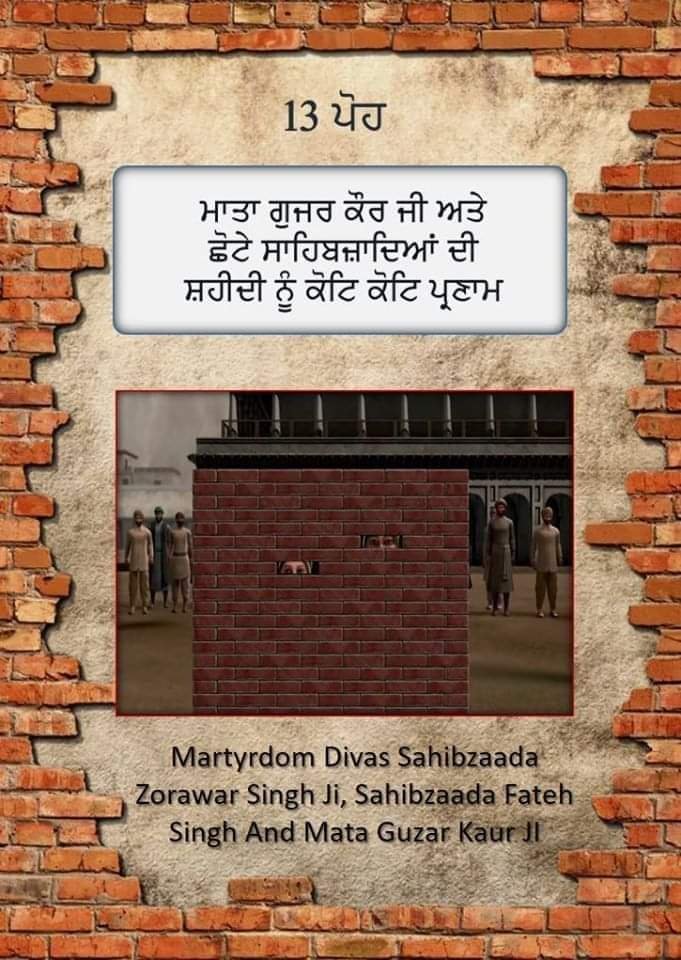
Finally young Sahibzadas were brought for bricking alive in a wall. The brave sons raised Jaikaras and fearlessly faced the ordeal.
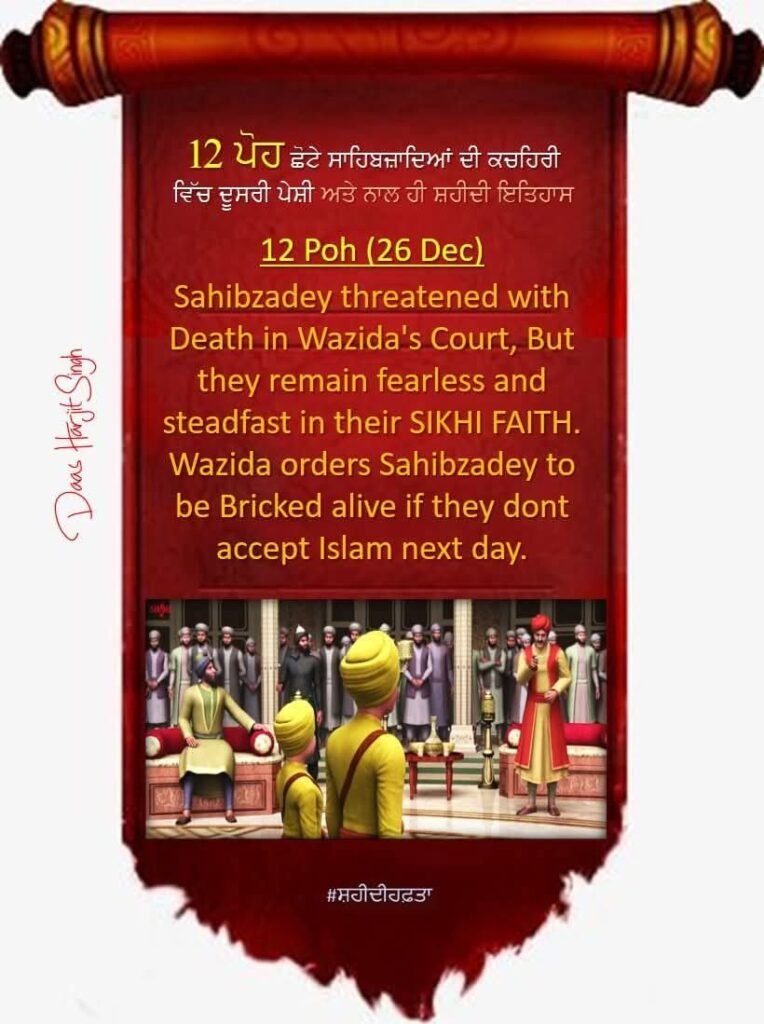
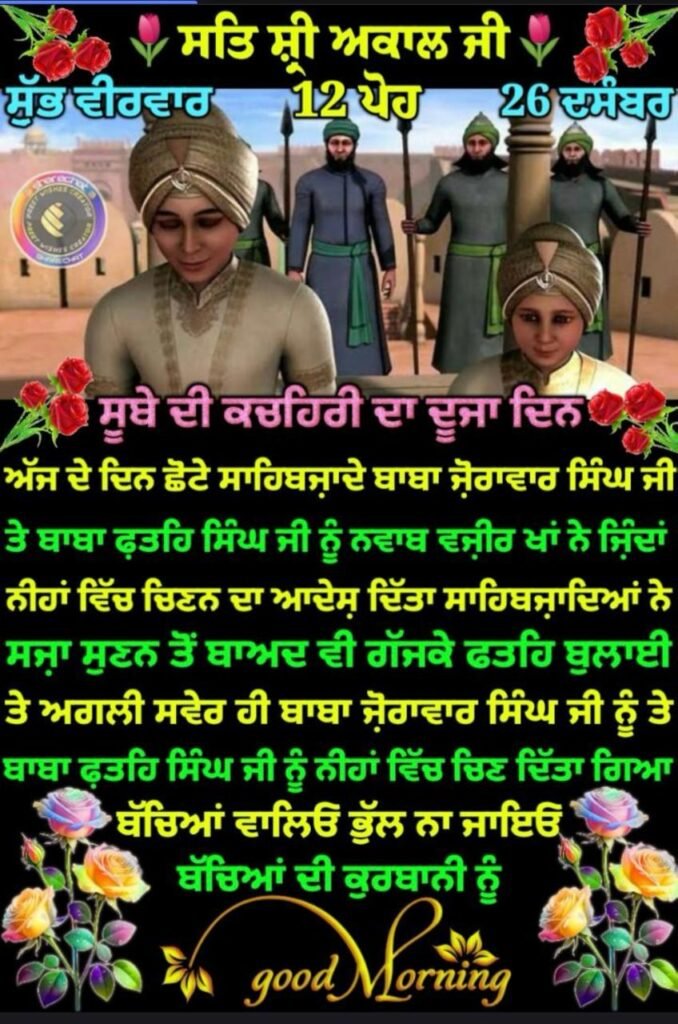
As the wall reached head height, Sahibzadas fell unconscious. The wall on completion fell, Sahibzadas were still alive. Wazir Khan ordered that their throats be slit with knife by the process of Zibah. It’s mentioned that Baba Zorawar Singh passed away instantly, however mortal remains of Baba Fateh Singh took some time to go still. Thus the young children stood by their faith till their end
Mata Gujri ji also passed away in Thanda Burj the same day. Thus a saga of unparalleled bravery and sacrifice came to an end. The mortal remains were disposed off in near by Jungle which had carnivorous wild animals.💐
48 Hours after the sacrifice, Diwan Todar Mal, a Oswal Jain Shardalu of Guru ji arranged cremation after buying land from Subedar, at an exorbitant price in vertically standing Gold Ashrafis.
Presently Fatehgarh Sahib Gurudwara stands at the bricking site and Gurudwara Joyti Swarup stands at the Cremation site.
Guru ji from Machiwara went Westwards towards Kot Kapura and then Muktsar.
Imperial Forces still chasing.
After the rear guard Battle of Muktsar by 40 Muktas, Imperial Forces retreated and Guru ji went Southwards to Talwandi Sabo near Bathinda. It is one of the Five Takhts of Sikh Panth. Also known as Guru Ki Kashi.
5 years down the line, Baba Banda Singh Bahadur after collecting motley pheasant Sikh Army, defeated and killed Wazir khan at Battle of Chappar Chiri near Mohali. Two days later ransacked Sirhind, and killed Diwan Sucha Nand The Khalsa flag was hoisted and the place was named Fatehgarh Sahib.
328 feet high Fateh Burj now stands at the site of the Battle near Mohali.


🌹🌸🙏🌸🌹⚔(Concluded)👇


When we think of Punjab, we visualize a vibrant and colourful culture, warm people, and of course great food. The land has a rich history, but it is also one fraught with violence and turmoil. When British lawyer Cyril Radcliffe drew an arbitrary border for the Partition of India-Pakistan in 1947, it sliced right through the heart of Punjab sparking violence that still lingers like a thorn on the tongues of our grandparents who speak of the villages they can never return to or know.
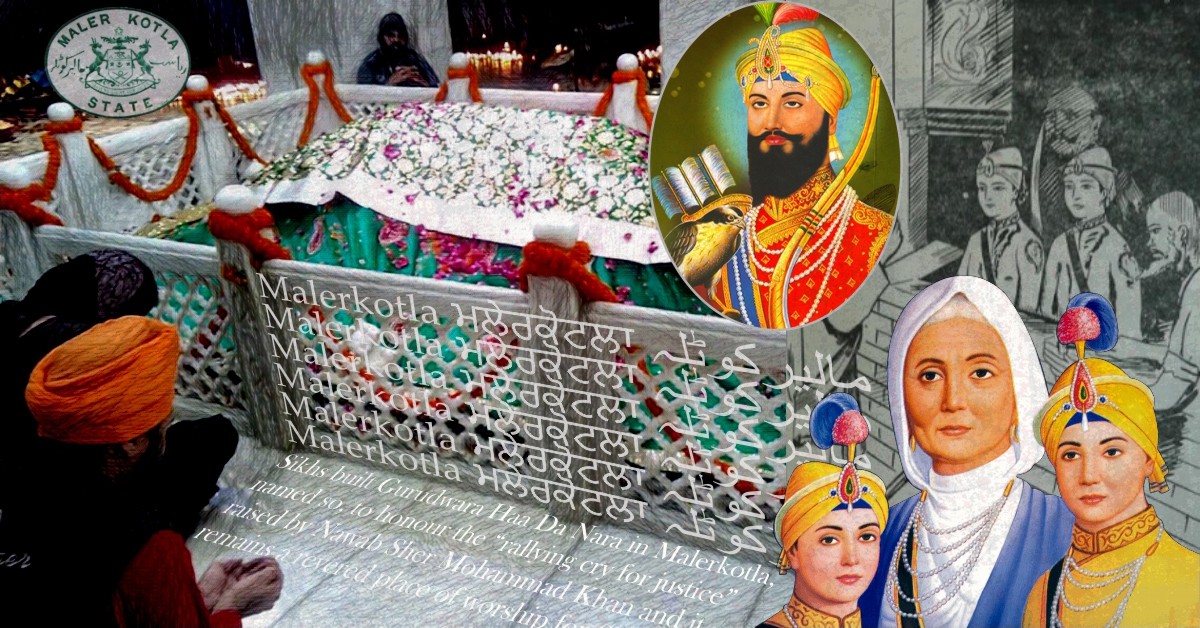
But while there were mass killings of Sikhs and Muslims in villages and cities across the Punjab in 1947, Malerkotla in Punjab saw no instances of communal violence and till date, the city stands in continued communal harmony. Malerkotla is the only Muslim majority city in Punjab with 68.5% residents being Muslim and the rest being Hindus, Sikhs, Jains, Christians and Buddhists.
History of peace:
To understand what made Malerkotla an oasis of peace even as Partition violence progressed all around it, we need to delve into a centuries old story of compassion. When the tenth Sikh Guru, Guru Gobind Singh ji was waging a “dharma yudh” to protect non-muslims from forced conversions by ruler Aurangzeb, his two youngest sons Sahebzada Zorawar Singh (age 9) and Sahebzada Fateh Singh (age 7), along with his mother Mata Gujri, were captured by the Nawab of Sirhind Wazir Khan while escaping from the siege of Anandpur in 1704. After keeping them captive for a few days, Wazir Khan ordered for the two children to be bricked behind a wall and hence, suffocated alive. Sher Mohammad Khan, the Nawab of Malerkotla, who was present at court, raised his objection to this order saying that the execution of children was a heinous act and was against the tenets of the Qur’an which did not allow the killing of innocent children. Despite his objection and appeals that reached even Aurangzeb, Wazir Khan’s orders were eventually followed and the children were executed. Mata Gujri is said to have collapsed because of the shock of her grand children’s deaths. When the news of the demise of his mother and youngest children reached Guru Gobind Singh ji, he was also informed about Nawab Sher Mohammad Khan’s protest. The Guru is said to have blessed the house of the Nawab, declaring that its “roots shall remain forever green.” Residents of Malerkotla believe this could be one of the reasons the town produces an abundance of vegetables throughout the year and is referred to as the “vegetable capital” of Punjab, supplying the produce to the entire state.
The Nawabs of Malerkotla before Sher Mohammad Khanhad also kept the spirit of harmony alive by practicing secularism and tolerance during their reign. In her book “Sharing the Sacred: Practicing Pluralism in Muslim North India”, Anna Bigelow cites the example of Nawab Bayzid Khan (1659) who invited a Chishti Sufi saint, Shah Fazl, and a Bairagi Hindu saint, Mahatma Sham Damodar, to bless the site of establishment of Kotla in a public enactment of pluralism.Today the tomb complex, or dargah, of Shah Fazl is a popular local mosque and shrine.
Blessings of a Guru honoured:
During Partition, when Punjab was ravaged by riots, looting, violence, sexual abuse, and mass killings, Malerkotla remained almost untouched. Sikhs from surrounding areas assured the resident Muslims that they were safe in Malerkotla and did not need to migrate to the newly formed Pakistan and risk their lives in the process of crossing the border.
In present day Malerkotla, inter-religious friendship is celebrated through shared festivals, partnering of communities in business and trade, mixed neighbourhoods, and mutual respect of the residents. Muslims, Sikhs, and Hindus live side by side and come to each other’s aid whenever needed. Sikhs built Gurudwara Haa Da Nara in Malerkotla, named so, to honour the “rallying cry for justice” raised by Nawab Sher Mohammad Khan and it remains a revered place of worship for Sikhs.
Pippa Virdee, author of “From the ashes of 1947: Reimagining Punjab” included a chapter on “Sacred Malerkotla” in the book. When Sabrang india asked her to what factors she thought Malerkotla owed its enduring peace, she told us, “Based on the fieldwork I conducted in Malerkotla I found that many of the residents still cited Sher Mohammad Khan’s protest as one of the most important reasons for Malerkotla’s peaceful communal relations. However, having looked at the state records, my research concluded that the role of the state was very important in maintaining peace during the partition violence. It was also quite apparent and exceptional that communal harmony was emphasised rather than the usual propaganda of enmity and tension amongst different communities. If the state is determined to maintain peace and prevent violence, it can play a positive role. If on the other hand, it wants to promote tension between the communities for its benefits, it was possible to do that as well because there was tension, but this was quickly and effectively diffused by the Nawabs. Of course, for the residents, the protest by Khan and the long history of communal harmony in the princely state is an important reminder to observe restraint rather than escalate tension.”
She makes an important point about the role of the state and administration in promoting communal harmony. In present day Malerkotla, children learn Urdu and Punjabi in schools together and are living in an environment that shows them examples of communal harmony all around them, giving us hope that the teachings of their ancestors will be carried forward.
As Anna Bigelow says, “Whether the people attribute the communal unity to Allah’s grace, the Guru’s blessing, the protective power of a saint, or to the secular policies of the nawabs, they greatly value this legacy of peace and are justifiably proud of it.”
Conclusion: Little Acts build up a Grand(er) Narrative
In this age of technology and instant gratification, with 24 hour news cycles that highlight how our country is disintegrating from within its seams,we seem to have lost touch with stories from our past that highlight the plurality and tolerance as well as a sense of community thathad united India. It is these stories that make and build the present and even, the future. The story of Malerkotla shows us how a simple act of compassion can span generations of peace, and how we can bring harmony to our country if each of us were to emulate the spirit of Malerkotla in our own small way. It will be our little acts of compassion that will build a strong and peaceful India for the generation to come.
Between 21 Dec to 27 Dec, Mata Gujari Wife of Guru Tegh Bahadur and the Mother of Guru Gobind Singh and her four grandsons Ajit Singh, Jhujhar Singh, Zoravar Singh and Fateh Singh were Martyred.
The elder two were killed in battle and the younger faced extreme torture – they were unyielding and bold.
These days are marked in piety and reverence. Langars come up all over Punjab on the roadside serving Roti, Saag and a Vegetable of Aalu, Gobi and Gajar.
The Langar is simple and the spirit full of pride and prayer. The Junoon is unmatched and unforgettable.
A salute to the Mata Gujri and the Sahibzade.
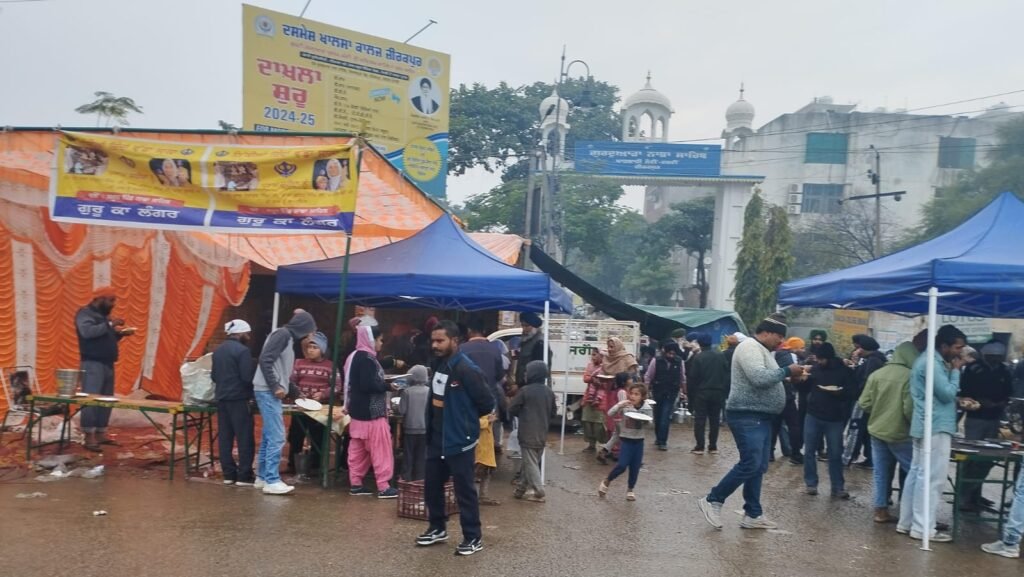
A man of few words, he heard everyone, high and low, and tackled the most complex issues by taking his own decisions


Dr Manmohan Singh’s very sad passing away denotes the end of a truly rare species of political leadership which was marked by exceptional intellectual capability, honesty, transparency and unparalleled humility.
A man of few words, he heard everyone, high and low, and tackled the most complex issues by taking his own decisions, which best served the national interest.
Years after Dr Singh returned to India, I had the privilege of having as my tutor a very eminent Economics Professor with whom Dr Manmohan Singh had done his doctoral studies at Oxford University. Dr Little and his good lady never tired of telling everyone that he was an outstanding economist, among the best who had studied at that university. He had an equally iconic reputation at Cambridge University.
In my career as a civil servant, I had the good fortune of working with Dr Singh when he was the Union Finance Minister during the most difficult period when the country was compelled to mortgage its gold reserves. I served, successively, as Defence and Home Secretary, and had to be daily at his office door, literally begging for some financial relief for the departments in which I worked.
Dr Singh will be remembered for his deep commitment to national interests. As the father of India’s economic reforms under then Prime Minister PV Narasimha Rao in the early 1990s, Dr Singh’s pursuit in unleashing India’s entrepreneurial spirit as PM—the so-called “animal spirits”—protected India in the wake of the 2008 global financial crisis. His outreach to the US, despite opposition by his own party, to sign the civil nuclear deal brought India to international attention as a responsible power.
His dedication to improving ties across India’s neighbourhood was exceptional; people-to-people ties were enormously improved, especially between India and Pakistan, despite the 2008 Mumbai attacks, which he had no hesitation placing at the door of the Pakistani military establishment. I had the good fortune of again serving with Dr Singh when he was the PM and I was appointed the Governor of J&K.
Without seeking any publicity, at any time of his long and distinguished career as a civil servant and later as a Union Minister and Prime Minister, Dr Singh always stood firm as a rock in pursuing the ethical path, even if he got into trouble with the political party he represented. He shall be remembered with adulation for the decades to come.
My wife and I send to Smt Gursharan Kaur and all in the family our heartfelt sympathy and pray that the Lord gives them the strength to bear this irreparable loss.
The Tribune mourns the loss of its loyal reader
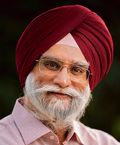
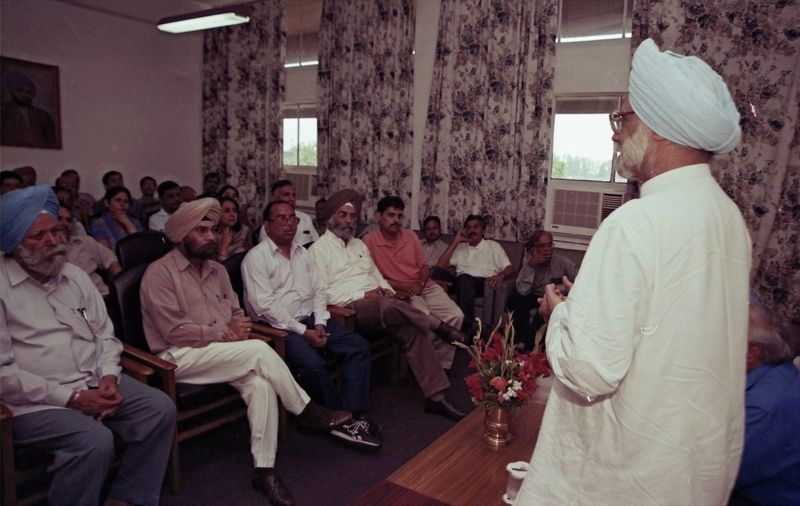
Dr Manmohan Singh’s inevitable query whenever we met was: “So, how are things at The Tribune?”
We all know The Tribune was a part of his daily media diet, and what was printed in the paper was often read by one of its most illustrious readers, also an occasional writer.
He visited The Tribune office more than once, and I was fortunate to be there when he came a few years after I joined the paper. I don’t quite remember which appointment he held at that time, but it was the person that was important, not the position. His gentle manner and absolute authority on the subject were soon evident as we listened to him in the Board Room, where he addressed The Tribune’s editorial staff. He was patient and interacted with us before retiring to the Editor-in-Chief office.
When The Tribune celebrated its 125th year in 2005, Prime Minister Manmohan Singh presided over a function at the Bhargava Auditorium of the PGI where he asserted: “I have been a loyal reader of The Tribune all my life. It is now a habit that I see no reason to give up. Like my morning cup of tea and my morning walk! There is no better way of starting a day than getting your favourite newspaper. There is no better way of assuring oneself that all is well with the world than seeing your newspaper at your doorstep every morning. Reading a newspaper is a habit, a second nature to all of us. It competes today with other media for our attention, but I cannot imagine it will ever be replaced. Well, I can speak for myself and say that I cannot imagine life without a morning dose of The Tribune! Even when I lived in distant lands, I would make sure that The Tribune was delivered to me.” Later, he released the book “The Tribune 125 Years: An Anthology 1881-2006,” by Pran Nevil at his residence and a postal stamp commemorating the 125th anniversary of the paper in Parliament.
Such was his bond with the paper that he would, in 2012, release V N Dutta’s book “The Tribune 130 Years: A Witness to History, at Vigyan Bhavan in Delhi. So much of Punjabi Delhi came to the event, and such was their connection with The Tribune that when the time came to leave, feet dragged, and there were more than a few grumbles!
We called on Doctor Sahib and Mrs Gursharan Kaur in Delhi some time ago. He started with the inevitable “How are things at The Tribune.” When I mentioned that I had retired, he gently smiled and said: “I am sure you are still involved, as am I. I read the paper daily.”
We discussed a few things, including the state of the Urdu Press in Punjab. The manner in which he posed questions was gentle, but he expected answers, and you didn’t want to let him down.
While writing this piece, nostalgia about this gentle man who had a life-long connection with The Tribune is overwhelming. Just knowing that what you were writing could possibly, maybe, catch the eye of the person who you respected so much was enough to make you put your best foot forward. Dr Manmohan Singh was also an intimidating presence who was not far from the minds of those who wrote for the paper. With his passing, The Tribune lost a mentor and reader extraordinaire.
I asked him: ‘What should be our approach to the media?’ He replied: ‘It should be an essay in persuasion and not an essay in coercion.’
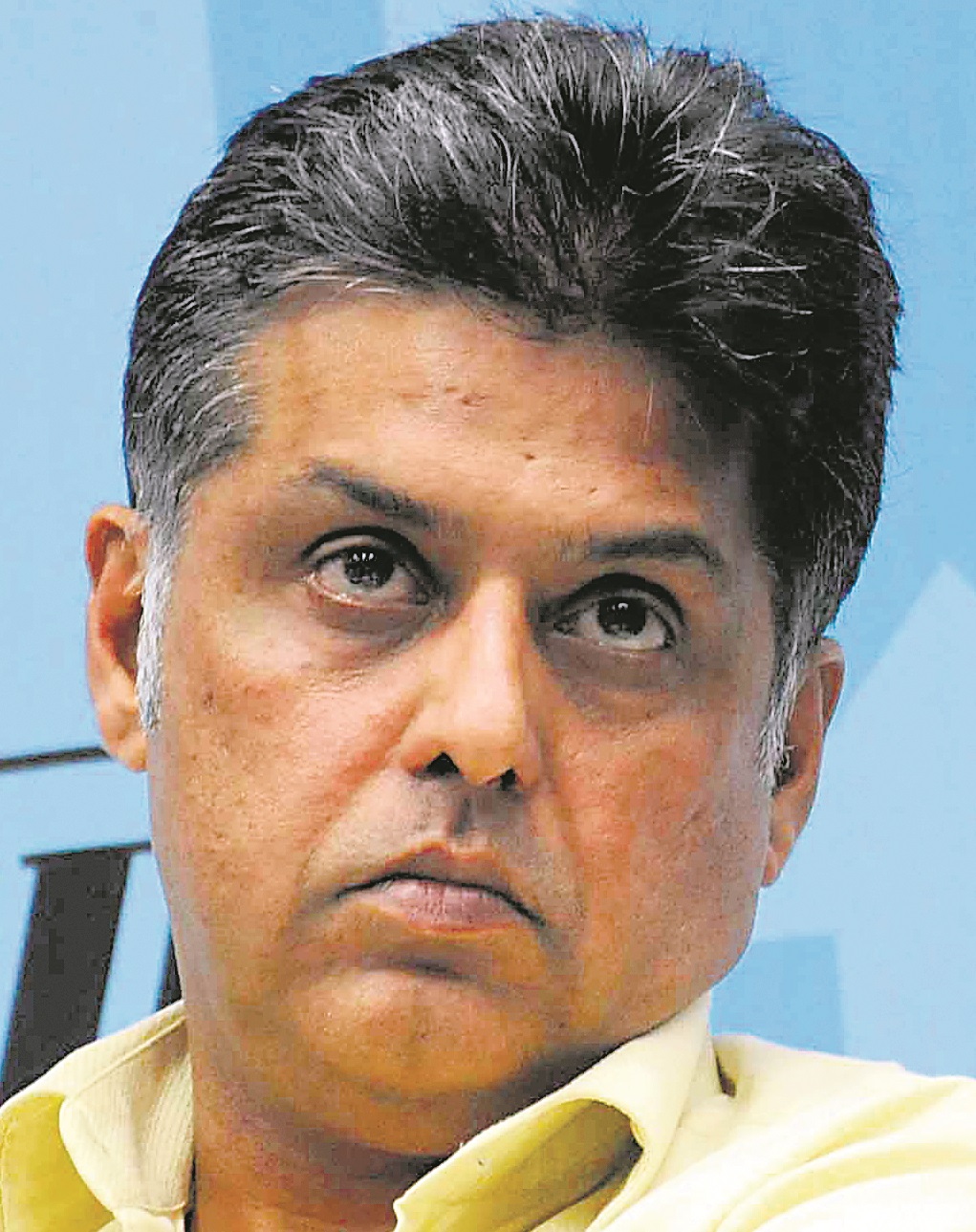
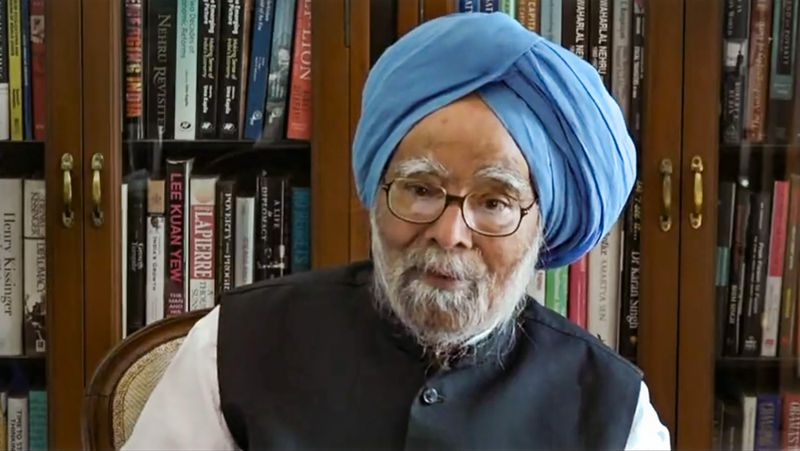
IT would be trite to say that Dr Manmohan Singh was an institution. He was a colossus who strode the economic and governance firmaments like an original intellectual giant in a landscape populated by pygmies.
Manmohan Singh was born at Gah, now in Pakistan. He crossed over to India as a refugee during the Partition. By the dint of hard work and perseverance, he built a life for himself as a distinguished professor, thought leader, economist of repute, governance expert, union minister and, finally, the Prime Minister of India.
He held a diverse array of positions. However, he was always polite to a fault, humble, self-effacing, the epitome of gravitas, carrying success lightly on his shoulders. Perhaps, his humble origins and the traumatic Partition deeply impacted and influenced him at a subliminal level, giving him an acute sense of the ethereal nature of power and positions.
Serving in such positions as Chief Economic Adviser in the Ministry of Finance and RBI Governor gave him an understanding of the economic and governance challenges. As Finance Minister from 1991-1996, he leveraged this understanding to preside over the most fundamental reset of India’s economic trajectory when he dismantled the licence quota permit raj and unshackled the creative animal spirits of India’s economic entrepreneurs. This reset took place when the post-World War-II world order had collapsed and political scientists were predicting the end of history.
He created a new world for millions of youth in the post-globalisation and -liberalisation period. It is unfortunate that the political lexicon and language of India never mirrored the economic reset and remains populist to this day.
As Leader of the Opposition in the Rajya Sabha from 1998 to 2004, he brought a quiet dignity to the august office at a time when political polarisation had made parliamentary proceedings extremely toxic and contentious, to put it mildly.
As PM, he staked his government to break the nuclear apartheid that had been plaguing India since the first nuclear test on May 18, 1974, when the Buddha smiled in the deserts of Rajasthan at Pokhran.
His experience in the mid-1970s as Member Finance of both the Atomic Energy Commission and Space Commission, perhaps, gave him a bird’s eye view of how various constraining global architectures created in the aftermath of that peaceful nuclear explosion had impacted India’s nuclear and space programme adversely. Notably, the architectures included the London Suppliers Club founded in 1974 (later called Nuclear Suppliers Group — NSG) to stunt India’s nuclear potential by restricting access to technology and materials.
After becoming PM in 2004, Dr Singh built upon the Jaswant Singh-Strobe Talbott dialogue held in the aftermath of India’s second nuclear test held in May 1998. It led to a second reset in Indo-US relations, with the signing of a New Framework for India-US Defence Relations on June 28, 2005, marking the full-scale start of defence cooperation between the two countries. Twenty days later, on July 18, 2005, the US and India announced the launch of the Civil Nuclear Cooperation Initiative. Under this, India agreed to commit all of its civilian nuclear facilities to IAEA safeguards.
In 2004, the Congress had only 145 seats in the 14th Lok Sabha. It was dependent on support of the CPI-M, CPI and others, who had 55 seats. The Left has had an anti-imperialist and, by extension, an anti-US worldview. It was an ideological anathema in the global world order after the collapse of the Communist USSR and its East European satellites in 1991.
In June 2008, Dr Singh threw down the gauntlet and announced that India would go ahead with the Indo-US Civil Nuclear Deal. Ironically, the BJP — the author of the reset with the US after the 1998 nuclear test and a signatory to the Next Steps in Strategic Partnership in 2004 — brought a no-confidence motion against Dr Singh’s UPA government in July 2008. Dr Singh, in turn, tabled a vote of confidence. Among unprecedented scenes in the Lok Sabha — including the then opposition (BJP) displaying wads of currency notes in the House — the government won the vote. It paved the way for the Indo-US nuclear deal to become a reality. It led to a historical waiver by the NSG — probably ‘the’ first for any Nuclear Proliferation Treaty (NPT) non-signatory.
In the 2009 General Election, the Congress swept every city — a fact attributed to the exotic N-deal, which had a magical effect on the middle classes, even as its clauses were never ever fully appreciated.
Dr Singh’s second term as PM from 2009-14 was also marked by major reforms, like permitting foreign direct investment in multi-brand retail. His foreign policy was characterised by friendly relations with the neighbours, including a robust back-channel dialogue with Pakistan that produced a Four-Point Formula, colloquially called the Manmohan- Musharraf Agreement. If actioned, it would have changed the dynamics of South Asia. Unfortunately, in 2007, after the Lal Masjid siege and lawyers’ strike in Pakistan, the calculation of foreign office mandarins in New Delhi was that Musharraf had lost the political capital to be able to carry the people of Pakistan along with him on the Formula.
It probably represents a historical once-in-a-century missed opportunity for not only India and Pakistan but also the region.
Great power relations witnessed an unprecedented degree of stability. Despite an overt reset with the US, Dr Singh finessed Russia-China dynamics. Not only were relations with Russia stable, but an unprecedented number of border management and economic cooperation deals were also signed with China.
Dr Singh was at the receiving end of a corrosive onslaught by the capitalist-controlled media, to which, ironically, he had provided boundless opportunities, too, by unshackling the Indian economy. Despite the unfair barrage, he never lost his calm.
As his Information and Broadcasting Minister and spokesperson of the government, I had to do the heavy lifting of putting the government’s point of view in the public space from 2012-2014. One day, while flying to Ludhiana for the golden jubilee celebrations of Punjab Agricultural University on December 8, 2012, I asked him: “What should be our approach to the media?” He replied: “It should be an essay in persuasion and not an essay in coercion.” I pushed back, saying that a biased and agenda-driven paradigm could not be influenced by persuasion because they were puppets of their masters, who were elsewhere. Unconvinced, he thoughtfully added: put yourself in the shoes of the opposition and imagine what it would be thinking if the entire media is turned into a government mouthpiece by using coercive means through the misuse of government instrumentalities. His prophetic words came true in the decade that followed his premiership.
At the January 3, 2014, press conference, Dr Singh gave an excellent summation of his 10 years as PM. Replying to a question, he stated philosophically: “History will judge me more kindly.” The Press, rather than focusing on the substance of his talk, concentrated on his announcement that he would be retiring after completing his second term in May. One newspaper even ran a photograph of an ‘exit’ sign over a door and Dr Singh walking towards it. It was an eloquent testimony to the ignominy he was put through — primarily because he was a decent person. This, notwithstanding that Dr Singh held a record number of press conferences during his tenure as PM, both in India and abroad.
On December 26, 2024, he breathed his last. All that needs to be said is that a gentleman is with us no more. Adieu, Sir —another world awaits.
Singh’s humility and grounded nature were highlighted in a heartfelt social media note by Uttar Pradesh Minister of State for Social Welfare (Independent Charge) Asim Arun

Even when serving as prime minister, Manmohan Singh preferred his modest Maruti Suzuki 800 over a luxury BMW as it reaffirmed his connection with the middle class and commitment to work for the common man.
Singh’s humility and grounded nature were highlighted in a heartfelt social media note by Uttar Pradesh Minister of State for Social Welfare (Independent Charge) Asim Arun.
He shared the note shortly after the 92-year-old Singh passed away late on Thursday at the All India Institute of Medical Sciences (AIIMS), Delhi.
Arun, who served as Singh’s close protection officer for nearly three years during his tenure as a Special Protection Group (SPG) officer, shared his experiences and insights into Singh’s personality, emphasising his simple lifestyle and connection with the common man.
Recalling his role as head of the SPG’s Close Protection Team (CPT) for the prime minister, Arun described the unique bond he shared with Singh.
“As the AIG CPT, my responsibility was to stay with the prime minister at all times, like his shadow. If only one bodyguard could stay with him, it had to be me,” he said.
One anecdote Arun shared reflected Singh’s simplicity — his attachment to his personal car, a modest Maruti Suzuki 800.
Despite having a fleet of high-security vehicles, including a luxurious BMW for official travel, Singh would often express his preference for the modest car.
Arun recalled Singh telling him, “Asim, I don’t like travelling in this car (BMW). My car is the Maruti.”
Arun said he would explain the security requirements of the high-tech BMW to Singh but the former prime minister’s gaze would always turn to the Maruti 800 as his motorcade passed by it.
“It was as if he was reaffirming his identity as a middle-class man and his commitment to caring for the common man. While the BMW might symbolise the grandeur of the prime minister’s position, in his heart, he saw the Maruti as his car
Beijing’s conciliatory approach prompted by geopolitical and economic compulsions

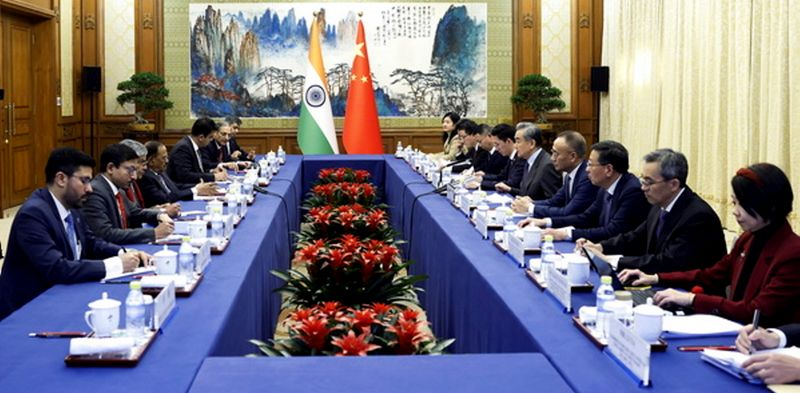
THE wheel seems to be turning full circle, going by the recent interaction between India’s National Security Adviser (NSA) Ajit Doval and Chinese Foreign Minister Wang Yi. The 3,488-km-long Line of Actual Control (LAC) between the two countries has been subjected to frequent turbulence since India became independent in 1947 and the Chinese Communist Party wrested power in China in 1949. While India extended a friendly hand by supporting the inclusion of China as a permanent member of the Security Council and recognising Chinese suzerainty over Tibet, China responded by attacking India in 1962 and occupying Aksai Chin in Ladakh as well as some areas in Arunachal Pradesh.
Since then, China has frequently indulged in expansionism in Ladakh and Arunachal by violating the LAC. However, having experienced the Chinese perfidy, India realised that the only way to respond to the Chinese moves was to maintain a firm and active stance. Thus, Chinese aggression at Nathu La in 1967 and Sumdorong Chu in 1987 was forcefully opposed, resulting in the maintenance of the status quo. It became clear that the Chinese respected strength.
Following Deng Xiaoping’s maxim of “hide your capabilities, bide your time”, the Chinese maintained a low profile for the next two decades while building up their economic and military might. During this period, a series of agreements between India and China were signed — in 1993, 1996, 2005 and 2013 — to ensure peace and tranquillity and recognise existing realities along the LAC.
However, as it grew stronger, the display of China’s expansionist tendencies started becoming obvious, with frequent violation of the aforesaid agreements. Thus, in 2014, the Chinese occupied Y-Junction and debarred the entry of Indian patrols to the Depsang Bulge, thereby denying approximately 1,100 sq km area for patrolling up to the Indian claim line. Likewise, Charding La access to Indian patrols near Chumar in Ladakh was denied from 2017 onwards. Additionally, a serious attempt to capture the Doklam Plateau in Bhutan was made in 2017, with the likely aim of posing a threat to the sensitive Siliguri corridor of India. The PLA design of aggressively creeping to occupy/threaten India-claimed areas emerged clearly.
Then, in 2020, amid the Covid-19 pandemic, China occupied territory north of Pangong Tso, Hot Springs and Galwan in Ladakh. The Indian Army retaliated strongly at Galwan, inflicting an undisclosed number of casualties on the PLA while suffering the loss of 20 personnel itself. Additionally, it also occupied its claimed areas on the Kailash Range. The resolute stand by the Indian forces put an effective spanner in the Chinese expansionist designs. Negotiations after the hostilities ensured partial restoration of the status quo ante in most of these areas. Since then, for the past four-and-a-half years, both sides have been in an eyeball-to-eyeball confrontation in the area, with more than 50,000 troops deployed on either side.
Till the boundary question between the two nations is finally settled, any future dialogue must take into account lessons from the past. Trust has been the first casualty in this relationship. Time and again, China has gone back on previously concluded agreements. In an effort to increase territorial gains, it has blatantly disregarded principles agreed upon between the two. As its power has grown vis-à-vis India’s, its stance has undergone changes to exploit its strengths. A similar tendency is also visible in its interactions with littoral states of the South China Sea. This lack of trust fuels unpredictability, making contending parties wary of each other.
The collusive relationship between China and Pakistan is well known. A close nexus has developed between the two over the past 50 years. Since both harbour an adversarial stance towards India, the possibility of a two-front threat to India cannot be ruled out. Therefore, the need to tread carefully in interacting and developing ties with either can hardly be overemphasised.
Both India and China are growing economies. The space for growth at the global and regional levels is limited. Therefore, conflict is bound to arise at some stage for the dominance of that limited space. Even in a healthy competition, there are inherent seeds of confrontation, underlining the necessity for the contending parties to be vigilant.
The current decline in the Chinese growth rate is a worrisome factor for Beijing. To sustain high economic growth, China needs global markets. With the US-led West chary of China’s ambitions, measures are being put in place to shift Western production facilities from China to other nations as well as impose restrictions on the import of Chinese goods, thus denying Beijing lucrative Western markets. In such an eventuality, China would be constrained to look for markets in the Global South, where the growing Indian market is an attractive proposition. The current Chinese overtures towards India need to factor in this possibility.
At the geopolitical level, enhanced India-US cooperation in the defence sector is troubling China. With the US viewing India as a frontline state to fight Chinese expansionism, a major constraint to a closer US-India hug is the Indian policy of strategic autonomy. Chinese efforts to wean India away from the US by adopting a conciliatory approach need to be understood in this context.
The dialogue between our NSA and the Chinese Foreign Minister has only brought out an agreement on some peripheral issues without touching upon the core Indian concern of Chinese opportunism on the boundary. Some or all the above factors may have impelled China to shift from a rigid, non-negotiable stance since 2020 to accept changes in the Depsang Bulge, Charding La and Chumar areas. It is certainly not from a position of weakness. After all, China only gave way north of Pangong Tso, Hot Springs and Galwan to achieve status quo ante on the Kailash Range, where Indian Army had become dominant.
Thus, the need for a cautious and well-analysed response to the illusory Chinese move on the boundary issue is warranted. The Dragon is known to drag its feet in giving away without securing disproportionate gains. Media reports saying that China has not eased its LAC build-up, as per US sources, only confirm this hypothesis.
India’s worry will remain the Doklam package deal, which the Tshering government was on the verge of signing.


ON December 20, Home Minister Amit Shah said in Kolkata that the Siliguri corridor is the key link to the Northeast. Given the unfriendly regime change in Bangladesh, Bhutan plays a crucial role towards its security. On December 6, King Jigme Khesar Namgyel Wangchuck of Bhutan was on an unprecedented third official visit to India in the last 20 months.
No King of Bhutan has come to India that frequently, but there was a reason. This year, Bhutan has been relatively silent about border resolution with China, especially after the previous government had signed a three-step roadmap in January 2023, held three expert group (on the 11th, 12th and 13th) and two joint technical group meetings, all packed in 2023, even as the 10th expert group meeting was held in 2021.
The cat was set among the pigeons after the previous PM, Lotay Tshering, in an interview to a Belgian newspaper in March 2023, said: “Soon we will be able to resolve the border issue, including Doklam, as there are no real differences between China and Bhutan.”
The Tshering interview triggered alarm bells in New Delhi and a chain of events, including a virtual air-dash by the King for talks with PM Narendra Modi. Following the joint statement which steered clear of the border issues, the then Foreign Secretary Vinay Kwatra said: “India will take all necessary measures to safeguard its national interest.”
High-ranking officials believe that Modi did some plain-speaking with the King, emphasising that their border disputes with China were intertwined. In the past, Bhutanese officials consulted their Indian counterparts prior to holding border talks with China. Especially regarding Doklam, where, in 2017, New Delhi invoked the India-Bhutan Treaty of Perpetual Friendship 2007 to intervene on Bhutanese territory (which China claims) to prevent the PLA from constructing a road to Gipmochi — its version of the tri-junction between India, Bhutan and China.
In an interview in October 2023 to an Indian newspaper, Tshering said his government had a month left in office, but “it was inching towards an agreement of the border.”
Also, last October, previous Foreign Minister Tandi Dorji had visited Beijing, a first for any Bhutanese minister, and met his counterpart Wang Yi, signed the Cooperation Agreement on Joint Technical Team for Delimitation and Demarcation of Border and endorsed the One-China policy.
Wang urged Dorji to establish diplomatic relations with China as Thimphu has none with any P5 country. In 2023, the Tshering government was actually racing (not inching) towards a border resolution. Dorji, after his 25th round of talks in Kunming, told journalists in Thimphu that talks with China had been accelerated.
His visit to Beijing and the agreements clinched with China, like the Tshering interviews earlier, shocked India’s security establishment. It forced the King days later to make an unprecedented second visit to India. Being asked to come to New Delhi twice within six months over border issues was plainly discomfiting for the King, though the second visit was disguised as Bhutan’s curtain-raiser for the Gelephu Smart City project. Tshering said: “The first leader the King wanted to discuss Gelephu with was PM Modi.”
In the elections held in November last year, Lotay Tshering’s party was eliminated in the first round and Tshering Tobgay became PM in January 2024. Not a word has been heard about the three-step roadmap since then from the new PM or the Foreign Minister. In 2013, PM Jigme Thinley was defeated by Tobgay in elections after he was seen getting closer to China.
Clearly, the King was in the loop of the policy shift for an early resolution of the border with China, including the Doklam package deal, delinked from its adverse impact on India’s strategic concerns in the Chumbi valley.
‘Kuensel’, a weekly broadsheet from Thimphu, has reported that young and educated Bhutanese have been urging the government to establish diplomatic relations with China and resolve the border issue. During my visit to Thimphu and Paro after Doklam, I felt that people were unhappy over the way Doklam was handled as also the economy and presence of Indian soldiers on Bhutanese soil.
Thimphu’s $3-billion economy supports a population of seven lakh Bhutanese, with hydropower as its main source of revenue, and with India financing all its five-year development plans. In fact, this year, the government doubled the Rs 5,000-crore outlay for the 12th plan to Rs 10,000 crore for the 13th plan.
Half the population is below 30 years and with 30 per cent unemployment, nearly 15,000 persons left Bhutan in 2023 for Australia, Canada and the US. Gelephu, the King believes, will be the open-sesame to get the young and educated Bhutanese to return.
Some believe Gelephu is the King’s idea of a diversion from the vexed border issues and economic hardship. The Gelephu SEZ will have energy and communication connectivity, an international airport, a university, a healthcare facility, etc.
A new dream city on the India-Bhutan border will soon come up with international aid and assistance to address Bhutan’s declining Gross National Happiness. India is a key player in the project.
India’s worry will remain the Doklam package deal, which the Tshering government was on the verge of signing. It would have plunged the Chumbi dagger deeper into the Siliguri corridor, popularly called Chicken’s Neck. While the Tobgay government will go slow on the three-step roadmap, the 26th round of Bhutan-China talks was held quietly at Thimphu in August.
Bhutan and India are the only two countries which have a disputed border with China and Thimphu is in a hurry to settle it. King Wangchuck’s word holds for now.






















































